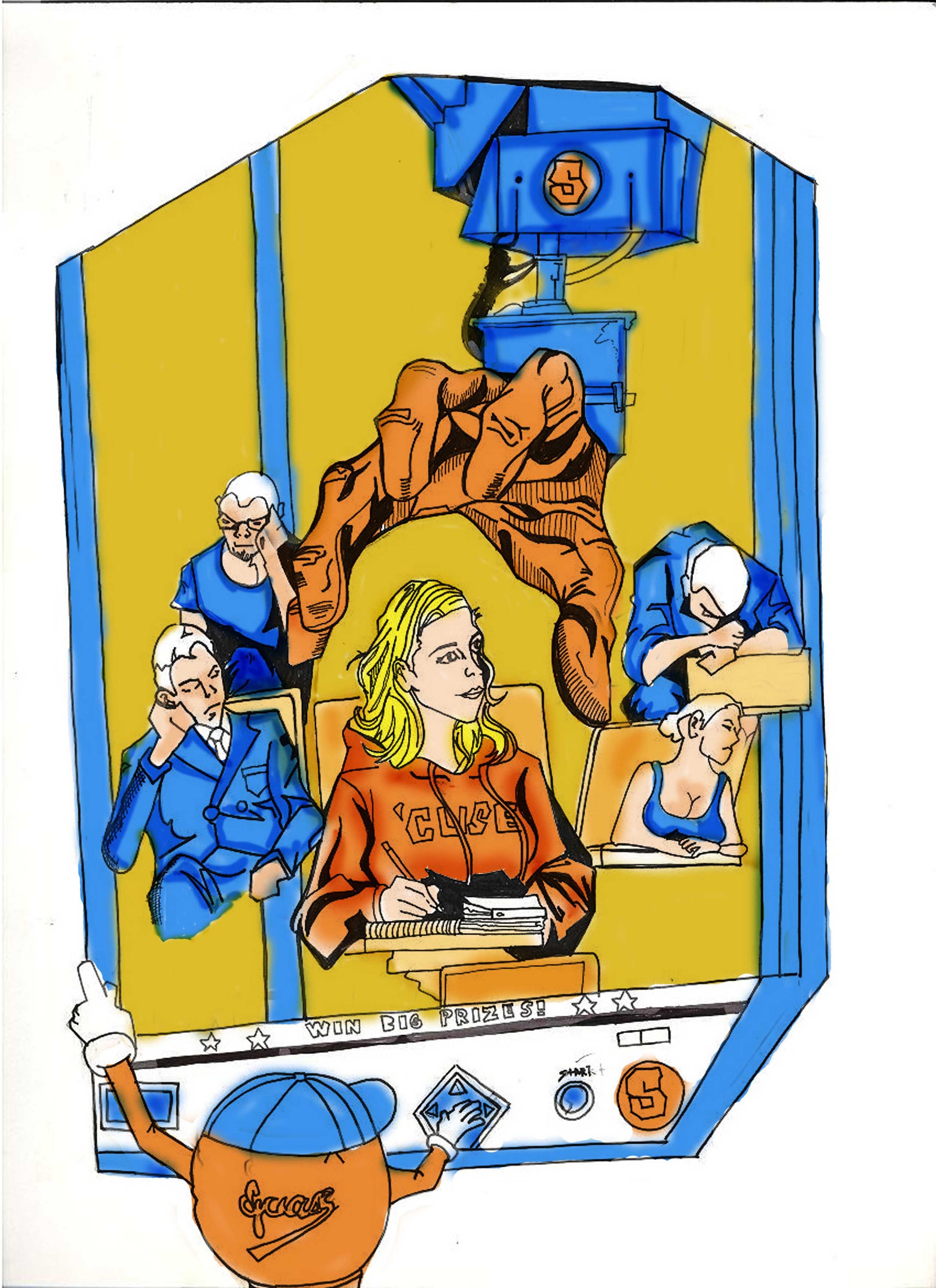Brain Trust: The mutual benefits of experiential learning
My eighth grade earth science teacher was crazy. He had a table covered in sand, rocks, and other earth science essentials that he'd douse with water, light on fire, and blow with a high-powered fan. He did all of this just to explain how the elements have shaped our world. Insane as he may have been, I only know as much about erosion as I do now because he let me splash some water on a giant sand pile in the middle of the classroom.
Experiential learning captures students' attention far better than any 55-minute PowerPoint-based lecture can. Kinesthetic learners are those who learn best by mobility and interaction. They must physically pour in the chemicals, watch their pretend stock portfolio gain profits, and reenact the Plessey v. Fergusson debate to better understand the concepts at hand. Sure, bullet points and slides are great for an organized notebook, but hands-on experience leads to better understanding. Research has shown that students studying from a textbook can only remember half of what they read just 10 minutes after finishing the material. But, most college classes still rely on the book learning methodology.
Besides the draw of better understanding, hands-on experiential learning can lead to community connection. Syracuse in particular could benefit from more out-of-the-classroom educational opportunities. Syracuse residents generally view the university as a campus full of financially stable, stuck-up students. An almost literal barrier is created between the campus and the main city area by the I-81 overpass at the end of the Harrison street hill. This perception, though not completely false in nature, has helped bolster the divide between students and the city residents.
Practical learning programs offered by the University, however, encourage students to bust out of classrooms and off the hill, breaking down barriers between residents and students. The Soling Program, based in the College of Arts and Sciences, has the right idea. The program seeks to stimulate creative and independent thinking while fostering connections with the city. One of the classes offered under the program in Spring 2010, was SOL 345 – Puppetry and Community. Students in this course worked directly with the internationally known Open Hand Theater to explore how the formation of community is affected by art. Students paired with a fifth grade class at an inner city school to design large puppets for a pageant performed at the end of the semester. The class tied in subjects of anthropology, urban planning, comparative religion, and ethnology while allowing students to hone their problem solving, presentation, and conflict resolution skills.
Or there's WRT 301 – Civic Writing. This class takes students off campus to interview residents of Syracuse's seemingly seedy West Side. By talking to people about a variety of community issues, students develop the situational knowledge and rhetorical abilities needed to one day fill public roles. At the same time, the interviewees have the opportunity to feel that their voices are being heard.
This type of practical learning not only helps students gain a solidified understanding of what could be otherwise boring course work, but it breaks down some of the negative stigma between SU and the city.
So as your schedule for next semester sits in Myslice filled with traditionally formatted pass-the-fuck-out lectures, consider clicking "search" one last time. Maybe you should drop that dry sociology class, and take up something a little more real.

